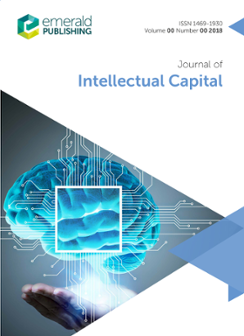Linking green intellectual capital, ambidextrous green innovation and firms green performance: evidence from Pakistani manufacturing firms
IF 6.8
2区 管理学
Q1 BUSINESS
引用次数: 7
Abstract
PurposeGiven the importance of environmental protection and the crucial role of manufacturing firms in environmental degradation, the purpose of this research is to investigate the impact of green intellectual capital (GIC) on firms' green performance (GP), mediating effects of ambidextrous green innovation (GI) and moderating role of technological turbulence (TT).Design/methodology/approachThe study employed a quantitative research approach with the partial least square structural equation modeling (PLS-SEM) methodology to assess the proposed relationships among the constructs on a sample of 334 executives from 134 medium and large-sized manufacturing firms.FindingsThe findings show that GIC significantly impacts different aspects of GP, including green management, green process and green product performance. Moreover, exploitative and exploratory GI serves as mediators between GIC and firms' GP. Finally, the findings demonstrate that TT moderation enhanced the effects of GIC on exploratory GI, while decreasing the effects of GIC on exploitative GI.Practical implicationsThe research offers valuable insights and a novel strategy for manufacturing firms and policymakers to mitigate environmental degradation and attain sustainable GP by stimulating ambidextrous GI through green intangible resources.Originality/valueThis research adds to the current GIC, GI and GP literature by focusing on green environmental issues using the resource-based view (RBV) theory. This research also provides a significant theoretical and practical justification for explaining the relationships by differentiating ambidextrous GI between exploitative and exploratory GI's mediating effects and TT's moderating effects.链接绿色智力资本、灵巧绿色创新和企业绿色绩效:来自巴基斯坦制造业企业的证据
考虑到环境保护的重要性和制造业企业在环境恶化中的关键作用,本研究的目的是探讨绿色智力资本(GIC)对企业绿色绩效(GP)的影响、双灵巧绿色创新(GI)的中介效应和技术动荡(TT)的调节作用。本研究采用偏最小二乘结构方程建模(PLS-SEM)方法的定量研究方法,对来自134家大中型制造企业的334名高管样本进行了评估。研究结果表明,政府间投资对绿色管理、绿色过程和绿色产品性能的影响显著。此外,剥削性和探索性GI在GIC和企业GP之间起中介作用。最后,研究结果表明,TT调节增强了GIC对探索性GI的影响,同时降低了GIC对剥削性GI的影响。实践意义本研究为制造业企业和决策者通过绿色无形资源刺激双向地理指标以缓解环境退化和实现可持续的GP提供了有价值的见解和新策略。原创性/价值本研究利用资源基础观(RBV)理论关注绿色环境问题,对现有的GIC、GI和GP文献进行了补充。本研究也为区分利用性和探索性双向地理标志的中介作用和TT的调节作用,解释两者之间的关系提供了重要的理论和实践依据。
本文章由计算机程序翻译,如有差异,请以英文原文为准。
求助全文
约1分钟内获得全文
求助全文
来源期刊

Journal of Intellectual Capital
Multiple-
CiteScore
14.50
自引率
13.30%
发文量
27
期刊介绍:
The Journal of Intellectual Capital is a peer-reviewed international publication dedicated to the exchange of the latest research and best practice information on all aspects of creating, identifying, managing and measuring intellectual capital in organisations. The journal publishes original research and case studies by academic, business and public sector contributors on intellectual capital strategies, approaches, frameworks, tools, techniques and technologies in order to increase the understanding of intellectual capital within the context of the modern knowledge economy. The focus of this journal is on the identification of innovative intellectual capital strategies and the application of theoretical concepts to real-world situations.
 求助内容:
求助内容: 应助结果提醒方式:
应助结果提醒方式:


